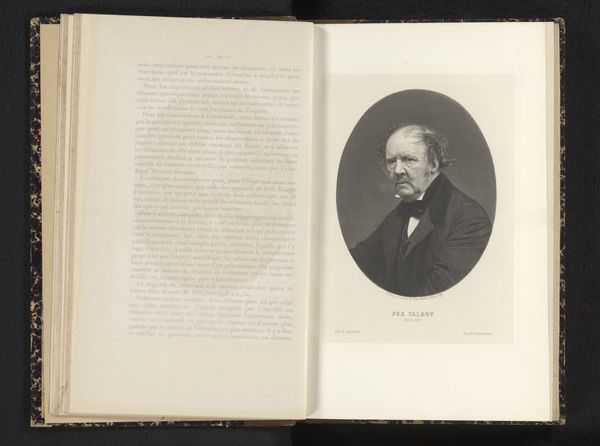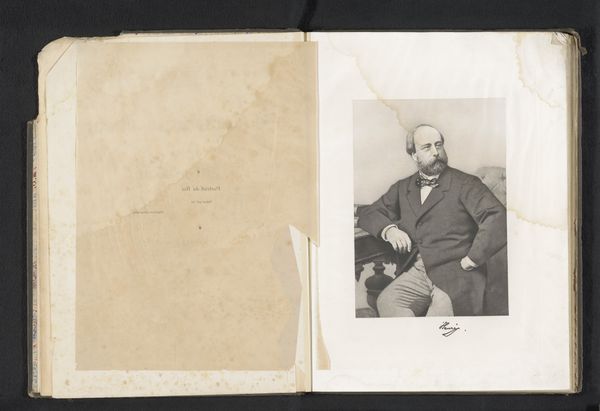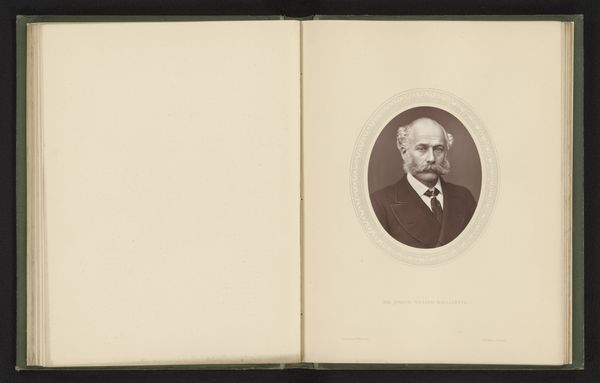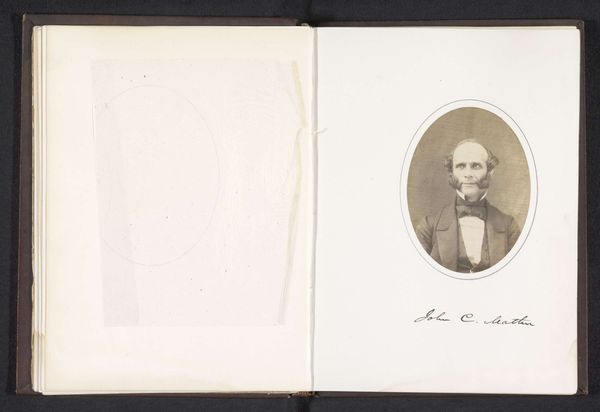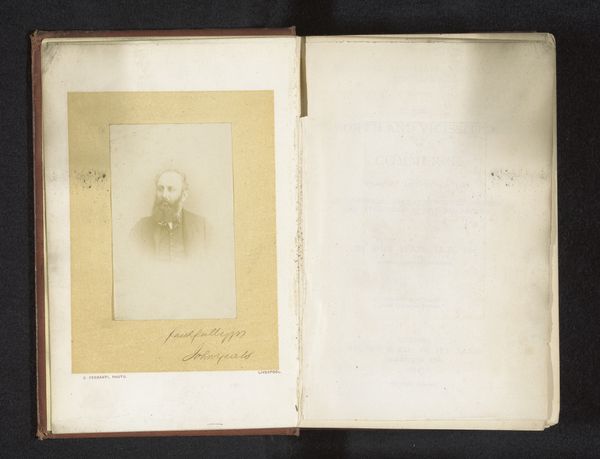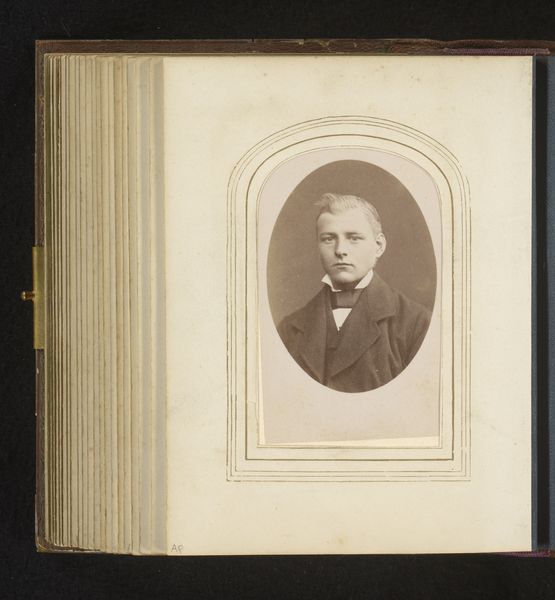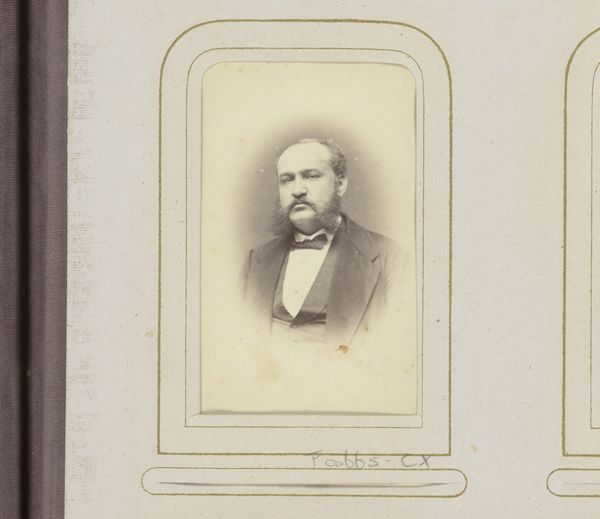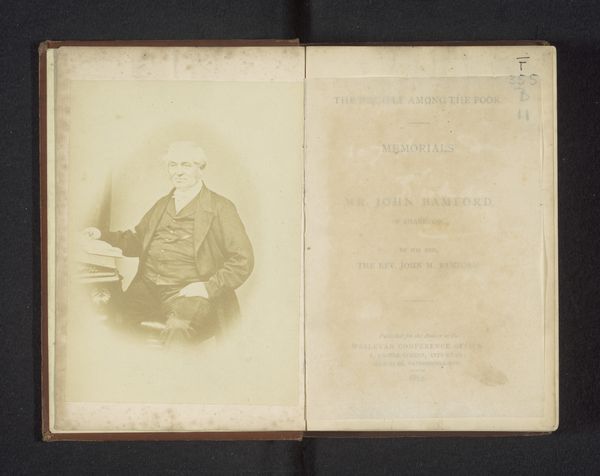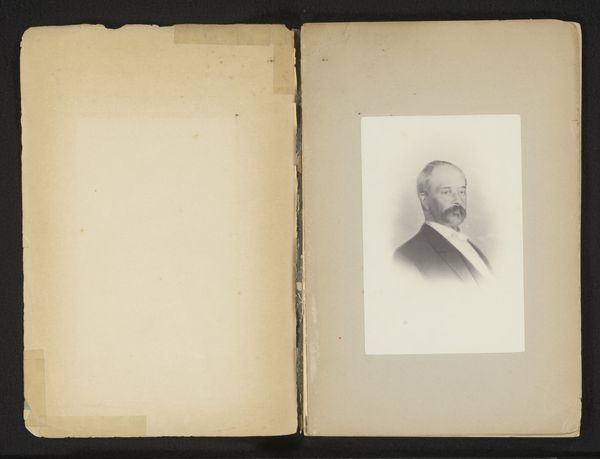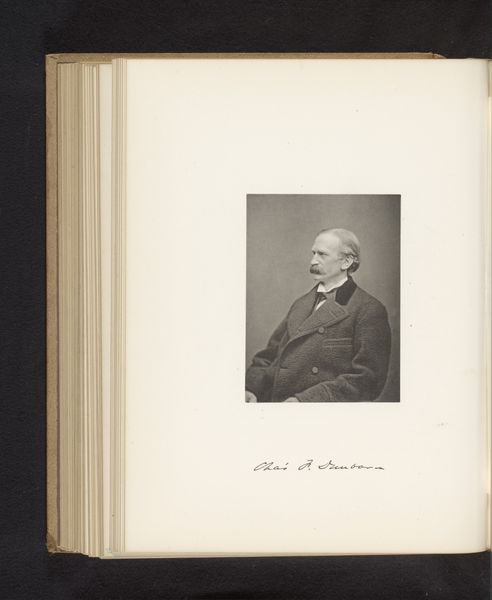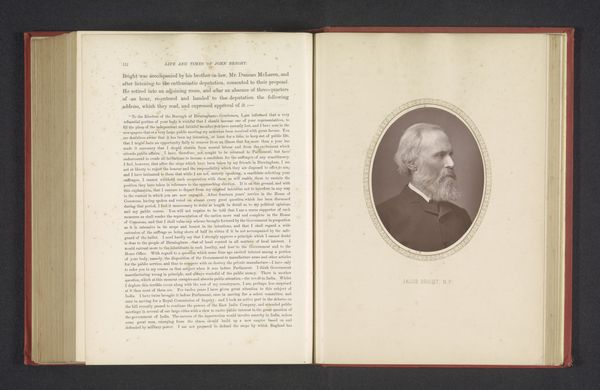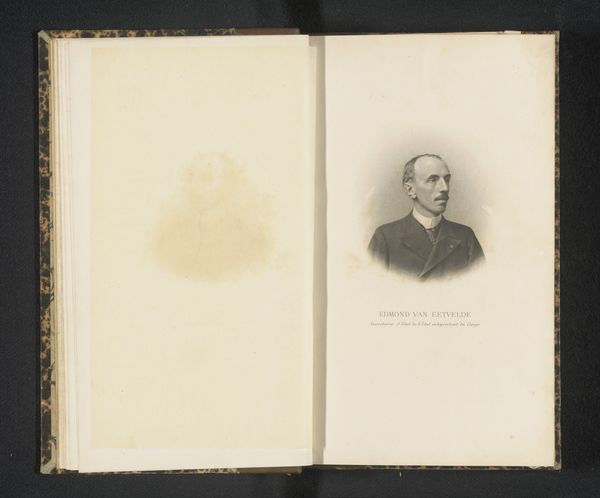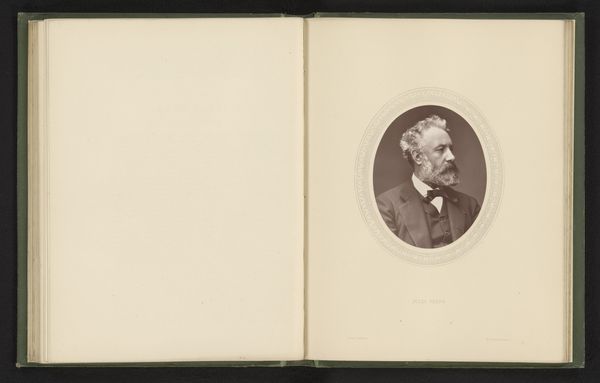
photography, albumen-print
#
still-life
#
photography
#
history-painting
#
albumen-print
#
realism
Dimensions: height 110 mm, width 86 mm
Copyright: Rijks Museum: Open Domain
Curator: Here we have an interesting piece, a photographic portrait entitled "Portret van Hendrick Bradley Wright." We believe it dates from before 1873. Editor: The gentleman certainly has a presence. His gaze is intense, and I am drawn to the precision of his mustache and the sharpness of his collar; he feels every bit the 19th-century statesman. Curator: Indeed. The image is an albumen print, a popular photographic process at the time. If you look closely, you can see the subtle tonal range that the albumen process provides, adding to the depth of the image. Editor: That is so interesting. The albumen itself must be critical to that tonal quality. The sepia tones of the print evoke a strong sense of nostalgia, calling up notions of Victorian values. I would bet there’s something very specific conveyed by the man’s dress, a kind of cultural shorthand for success or power. Curator: That’s very perceptive. The sitter’s clothes and the details like the carefully arranged bow tie were often potent status signifiers. Early photography served in part as a vehicle for the bourgeois to visualize and share status, borrowing conventions that were formerly only possible with painting, which this clearly tries to emulate with its very static pose and soft-focus finish. The material conditions that make the style possible interest me—how were portraits consumed, traded and commodified. Editor: I find myself going back to that piercing stare. Wright’s gaze feels insistent, and for me it is tied up with so many implications of authority and influence; his stern countenance evokes both the aspirations and the tensions of the time. Curator: Ultimately, whether consciously or not, this photographer’s choice of process, and use of photography mimics artistic precedents to legitimize both sitter and maker as part of the cultural establishment. Editor: It leaves one with a profound sense of the weight of history. Curator: Indeed, and the powerful impact of photographic materials upon the society from which it arose.
Comments
No comments
Be the first to comment and join the conversation on the ultimate creative platform.
